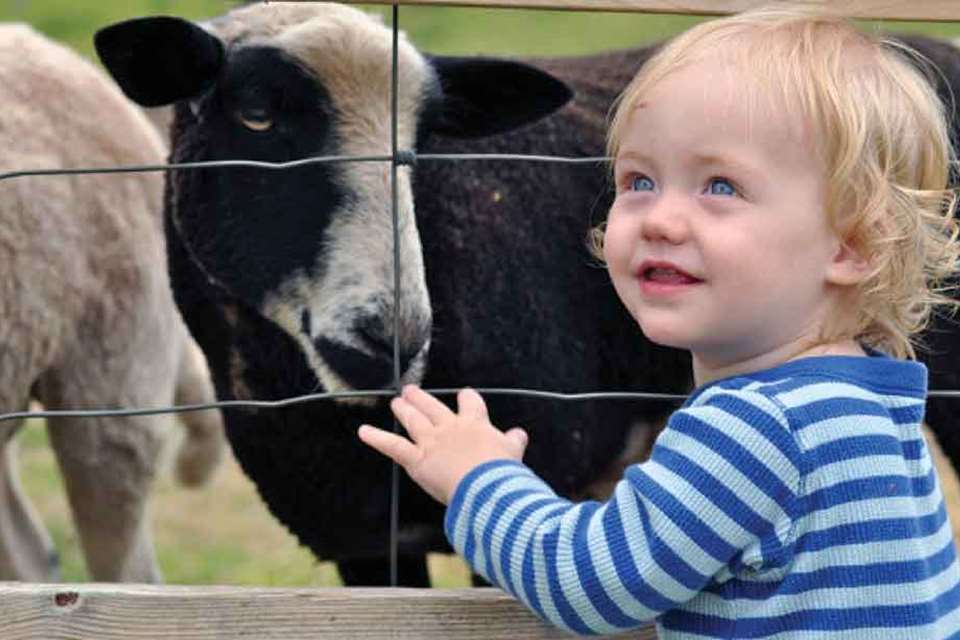EYFS Activities: Essential experiences... nature
Penny Tassoni
Monday, September 18, 2017
What are the best ways to encourage children’s inherent interest in nature? Penny Tassoni offers some tips for autumn and beyond

Nature is something that surrounds children even in urban areas. Sadly, though, over a number of years, there has been a decline in our collective knowledge of nature, including the names of plants, trees and birds. This is interesting given that generally children are very interested in what they see and hear outdoors. So, it may be worthwhile looking at experiences and activities in which we can bring nature to life for children and also for ourselves.
BENEFITS
Activities about nature can have many developmental benefits:
Physical skills To observe and learn about nature, children often have to stand still and be calm. This is actually quite a hard thing for children to do as it requires co-ordination and control. If children are motivated by what they can see, they are more likely to learn to do this.
Language development Nature activities are likely to encourage questions and comments from children, as what they see may be new and thought-provoking. Children should also gain a lot of vocabulary about nature, including verbs such as ‘fly’, ‘wriggle’ and ‘slide’, as well as the names of specific creatures.
Cognition There are many ways for children to explore the process of learning. Using readily available technology such as cameras on tablets and the internet, children can learn the process of research. While children will need to be guided, learning how to learn is a very important skill that is sometimes referred to as ‘metacognition’.
Emotional development Children love to learn and take great pride in knowing that they have learnt something. These feelings of competence help children to develop confidence.
PLANNING A PROGRAMME
It is worth creating a programme of activities based on the changing seasons that takes place throughout the year. This might include collecting leaves in autumn and observing buds developing in spring. A good starting point may be to look at what activities usually take place in your setting and then to develop these further.
Preparation matters
There are huge learning opportunities for children, but to make the most of these, we do need to prepare carefully. For most of us, this means finding out the names of trees, birds and even spiders that children are likely to see. This requires a bit of homework, but fortunately because of online technology, it has never been easier to do so. It is also worth collating this information so that you can develop your own resource for your setting. This might include websites and apps.
Sample activities for autumn
Trees Help children to learn about which trees shed their leaves and also learn to name accurately the different trees that they can see. Focus their attention on the size and shape of the tree. Visit www.woodlandtrust.org.uk to help you identify trees, but also look at their features with children.
Spiders Look out for spiders, especially the common ‘garden cross’ variety that weaves large webs at this time of year. For information about spiders and bugs, visit www.britishspiders.org.uk/wiki2015/index.php?title=Garden_Spiders
Birds Encourage children to spot empty nests and also to notice and name the birds that are common; for example, pigeons, ducks, blackbirds and thrushes. Children may also see some flocks of birds in the sky. To identify birds, visit www.rspb.org.uk/birds-and-wildlife/bird-and-wildlife-guides/bird-identifier, and to help children recognise common bird songs, go to www.woodlandtrust.org.uk/blog/2017/04/identifying-bird-songs.
Repeat While these can be one-off activities, ideally, repeating the same walk is useful as children can notice the changes that are taking place as the temperature and light change.
BUILDING ON ACTIVITIES
There are many ways that you can build on nature activities. It is worth creating with the children a journal each month that contains photographs of what the children have seen along with annotations.
Month by month, with the children, you could document the trees, flowers and birds that have been seen, as well as insects. You could also plan to take part in some of the national surveys. Look out for the big butterfly count (www.bigbutterflycount.org) and also the Big Garden Birdwatch run by the RSPB. You could also plan to visit a woodland or nature reserve with children or even the local park. This way children’s knowledge of nature can be increased over time.
HOME LEARNING
There are many ways that parents can encourage their children’s learning about nature at home. Share websites and apps with parents or encourage them to send in photographs or video clips that they have taken with their child while they are out and about.
In some cases, a parent may have knowledge about wildlife and plants that they can share with you. Some parents may also be interested in taking part in the national surveys of birds or butterflies at home if you are doing them in your setting. You may also like to share with parents the way in which you are using nature activities as a way to show children how to use technology to research and learn more.










